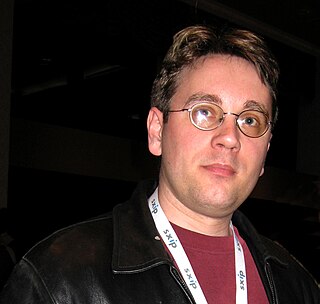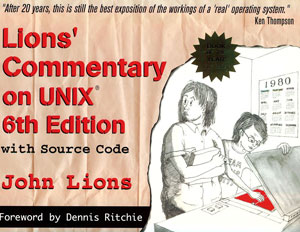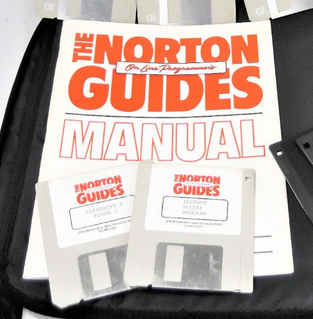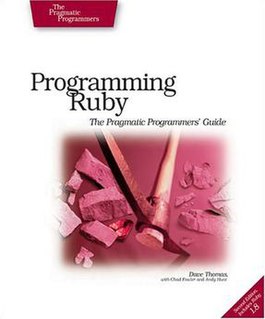 W
WAdvanced Programming in the Unix Environment is a computer programming book by W. Richard Stevens describing the application programming interface of the UNIX family of operating systems. The book illustrates UNIX application programming in the C programming language.
 W
WAlgorithms + Data Structures = Programs is a 1976 book written by Niklaus Wirth covering some of the fundamental topics of computer programming, particularly that algorithms and data structures are inherently related. For example, if one has a sorted list one will use a search algorithm optimal for sorted lists.
 W
WThe Art of Computer Programming (TAOCP) is a comprehensive monograph written by computer scientist Donald Knuth that covers many kinds of programming algorithms and their analysis.
 W
WThe Art of Unix Programming by Eric S. Raymond is a book about the history and culture of Unix programming from its earliest days in 1969 to 2003 when it was published, covering both genetic derivations such as BSD and conceptual ones such as Linux.
 W
WThe AWK Programming Language is a well-known 1988 book written by Alfred V. Aho, Brian W. Kernighan, and Peter J. Weinberger and published by Addison-Wesley. The book describes the AWK programming language and is the de facto standard for the language, written by its inventors. W. Richard Stevens, author of several UNIX books including Advanced Programming in the Unix Environment, cites the book as one of his favorite technical books. The book is translated to several languages and is cited by many technical papers in the ACM journals.
 W
WThe C Programming Language is a computer programming book written by Brian Kernighan and Dennis Ritchie, the latter of whom originally designed and implemented the language, as well as co-designed the Unix operating system with which development of the language was closely intertwined. The book was central to the development and popularization of the C programming language and is still widely read and used today. Because the book was co-authored by the original language designer, and because the first edition of the book served for many years as the de facto standard for the language, the book was regarded by many to be the authoritative reference on C.
 W
WC Traps and Pitfalls is a slim computer programming book by former AT&T Corporation researcher and programmer Andrew Koenig, its first edition still in print in 2017, which outlines the many ways in which beginners and even sometimes quite experienced C programmers can write poor, malfunctioning and dangerous source code.
 W
WCode: The Hidden Language of Computer Hardware and Software (1999) is a book by Charles Petzold that seeks to teach how personal computers work at a hardware and software level. In the preface to the 2000 softcover edition, Petzold wrote that his goal was for readers to understand how computers work at a concrete level that "just might even rival that of electrical engineers and programmers".
 W
WCoders at Work: Reflections on the Craft of Programming (ISBN 1-430-21948-3) is a 2009 book by Peter Seibel comprising interviews with 15 highly accomplished programmers. The primary topics in these interviews include how the interviewees learned programming, how they debug code, their favorite languages and tools, their opinions on literate programming, proofs, code reading and so on.
 W
WConcepts, Techniques, and Models of Computer Programming is a textbook published in 2004 about general computer programming concepts from MIT Press written by Université catholique de Louvain professor Peter Van Roy and Royal Institute of Technology, Sweden professor Seif Haridi.
 W
WCore Python Programming is a textbook on the Python programming language, written by Wesley J. Chun. The first edition of the book was released on December 14, 2000. The second edition was released several years later on September 18, 2006. Core Python Programming is targeted mainly at higher education students and IT professionals.
 W
WMark Pilgrim is a software developer, writer, and advocate of free software. He authored a popular blog, and has written several books, including Dive into Python, a guide to the Python programming language published under the GNU Free Documentation License. Formerly an accessibility architect in the IBM Emerging Technologies Group, he started working at Google in March 2007. In 2018, he moved to Brave.
 W
WJoshua J. Bloch is an American software engineer and a technology author, formerly employed at Sun Microsystems and Google. He led the design and implementation of numerous Java platform features, including the Java Collections Framework, the java.math package, and the assert mechanism. He is the author of the programming guide Effective Java (2001), which won the 2001 Jolt Award, and is a co-author of two other Java books, Java Puzzlers (2005) and Java Concurrency In Practice (2006).
 W
WThe Elements of Java Style is a book of rules of programming style in the Java computer language. The book was published by Cambridge University Press in January 2000. The book provides conventions for formatting, naming, documentation, programming and packaging.
 W
WThe Elements of Programming Style, by Brian W. Kernighan and P. J. Plauger, is a study of programming style, advocating the notion that computer programs should be written not only to satisfy the compiler or personal programming "style", but also for "readability" by humans, specifically software maintenance engineers, programmers and technical writers. It was originally published in 1974.
 W
WEssentials of Programming Languages (EOPL) is a textbook on programming languages by Daniel P. Friedman, Mitchell Wand, and Christopher T. Haynes.
 W
WThe Linux Programming Interface: A Linux and UNIX System Programming Handbook is a book written by Michael Kerrisk, which documents the APIs of the Linux kernel and of the GNU C Library (glibc).
 W
WLions' Commentary on UNIX 6th Edition, with Source Code by John Lions (1976) contains source code of the 6th Edition Unix kernel plus a commentary. It is commonly referred to as the Lions Book. Despite its age, it is still considered an excellent commentary on simple but high quality code.
 W
WNorton Guides were a product family sold by Peter Norton Computing. The guides were written in 1985 by Warren Woodford for the x86 Assembly Language, C, BASIC, and Forth languages and made available to DOS users via a Terminate and Stay Resident (TSR) program that integrated with programming language editors on IBM PC type computers.
 W
WThe Pragmatic Programmer: From Journeyman to Master is a book about computer programming and software engineering, written by Andrew Hunt and David Thomas and published in October 1999. It is used as a textbook in related university courses. It was the first in a series of books under the label The Pragmatic Bookshelf. A second edition, The Pragmatic Programmer: Your Journey to Mastery was released in 2019 for the book's 20th anniversary, with major revisions and new material reflecting changes in the industry over the last twenty years.
 W
WProgramming Languages: Application and Interpretation (PLAI) is a free programming language textbook by Shriram Krishnamurthi. It is in use at over 30 universities, in several high-schools.
 W
WProgramming Ruby is a book about the Ruby programming language by Dave Thomas and Andrew Hunt, authors of The Pragmatic Programmer. In the Ruby community, it is commonly known as "The PickAxe" because of the pickaxe on the cover. The book has helped Ruby to spread outside Japan.
 W
WProgramming the Z80 is a seminal computer programming text, written by Rodnay Zaks and first published in 1979 by Sybex. It is designed as both an educational text to teach programming techniques of elementary to intermediate level using assembly language, and as a self-contained reference book. It covers more general concepts, such as information representation and data structures, and describes in detail topics specific to the Zilog Z80 microprocessor, such as its internal hardware organisation and instruction set. The book is considered an indispensable reference guide by many Z80 programmers. It was also published by RadioShack with the title How To Program The Z80. In 1983, Sybex published a companion volume, Z80 Applications written by James W. Coffron.
 W
WStructure and Interpretation of Computer Programs (SICP) is a computer science textbook by Massachusetts Institute of Technology professors Harold Abelson and Gerald Jay Sussman with Julie Sussman. It is known as the Wizard Book in hacker culture. It teaches fundamental principles of computer programming, including recursion, abstraction, modularity, and programming language design and implementation.
 W
WStructure and Interpretation of Computer Programs, JavaScript Adaptation is an adaptation of the computer science textbook Structure and Interpretation of Computer Programs (SICP). It teaches fundamental principles of computer programming, including recursion, abstraction, modularity, and programming language design and implementation. While the original version of SICP uses the programming language Scheme, this adaptation uses the programming language JavaScript.
 W
WThe Unix Programming Environment, first published in 1984 by Prentice Hall, is a book written by Brian W. Kernighan and Rob Pike, both of Bell Labs and considered an important and early document of the Unix operating system.